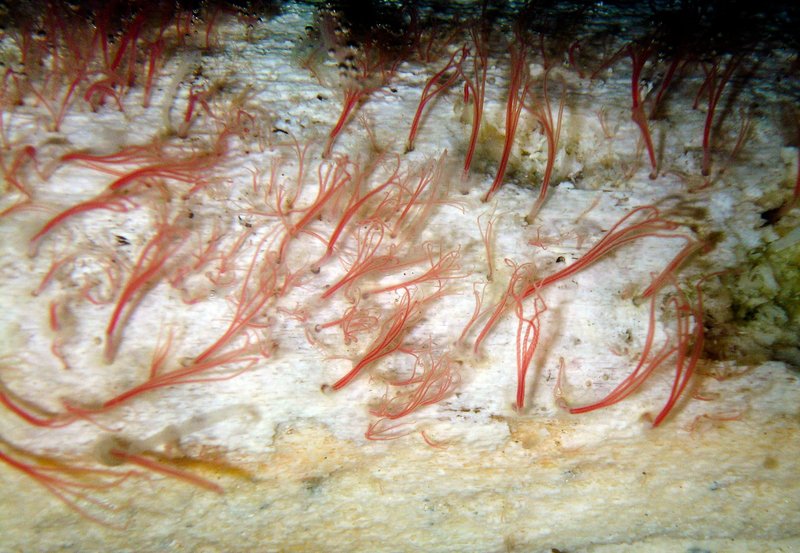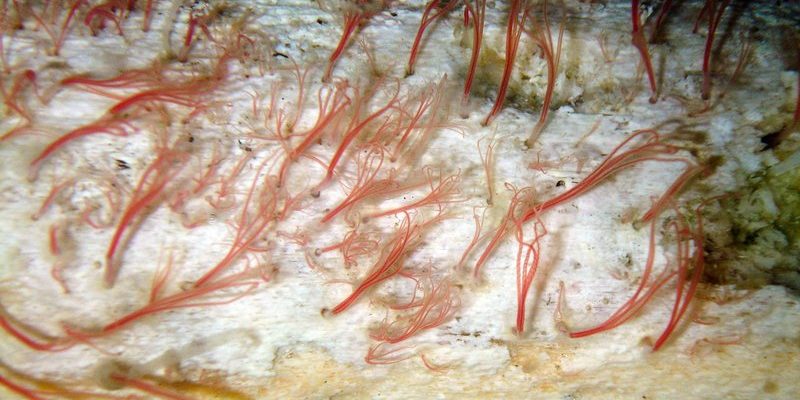
The bone-eating worm plays a fascinating role in its ecosystem, influencing not just the bones it consumes but also the variety of microfauna living alongside it. In many ways, it’s a major player in the cycle of life and death in the ocean. Let’s dive deeper to explore how these worms interact with other tiny creatures and the overall ecosystem they inhabit.
The Life of a Bone-Eating Worm
Bone-eating worms are unique in their ability to break down collagen and lipids found in bones through their symbiotic relationships with bacteria. This process allows them to transform what would otherwise be a lifeless skeleton into a rich source of nutrients. As they drill into the bones and consume them, they also create habitats for other microorganisms.
When a whale or other large marine animal dies, its skeleton sinks to the ocean floor. This is where the fun begins. The bone-eating worm is often one of the first to arrive on the scene. Using its specialized root-like structures, called *holdfasts*, it anchors itself to the bones and starts to feed. The nutrients released during this process attract a myriad of other tiny creatures, making the bones a lively hotspot in the dark ocean depths.
Interactions with Microfauna
You might be surprised to learn how many organisms are drawn to the feast created by bone-eating worms. Once these worms set up shop, they create a microhabitat that supports diverse forms of life, from bacteria to small crustaceans. This interaction is essential for the health of the ecosystem.
As the worms consume bones, they also release nutrients into the water. These nutrients act like a magnet, attracting various microorganisms, which in turn attract larger creatures. Picture a buffet that starts with a few brave diners—over time, the food attracts more and more people. You can see how this can quickly lead to a bustling community of life revolving around the bone-eating worm’s table!
Symbiotic Relationships
Symbiosis is a term that describes how different organisms live together and interact. In the case of bone-eating worms, their relationship with certain bacteria is the star of the show. These bacteria live inside the worms and help them break down the bones.
But it doesn’t stop there. Other microfauna such as amphipods and polychaete worms also join the fun. They feed on the bacteria or the remnants of the bones that the *Osedax* leaves behind. This creates a tiny ecosystem that thrives because of the initial actions of the bone-eating worm.
Imagine a community potluck where the bone-eating worm is the one who brings the main dish. Because of this dish, everyone else—those bacteria and other tiny creatures—has something to share as well. It’s a perfect example of how one species can create a ripple effect that supports an entire community.
Role in Nutrient Cycling
The actions of bone-eating worms help with nutrient cycling in the marine environment. When they break down bones, they release essential nutrients back into the ecosystem. This process is vital for the growth of phytoplankton, the foundation of the marine food web.
Phytoplankton are microscopic plants that serve as food for a variety of marine animals, from tiny fish to massive whales. If the bone-eating worms didn’t break down these bones, the nutrients would stay locked up, unused. So, when you think about nutrient cycling, these little worms are crucial contributors. They transform what could be waste into a nutrient-rich feast for others.
Impacts on Biodiversity
The presence of bone-eating worms can enhance biodiversity in their habitats. By breaking down the bones, they create niches for various microfauna, allowing a wider range of species to thrive. This is especially important in deep-sea environments, where life can be sparse.
More biodiversity means greater resilience. With different species coexisting, the ecosystem can better withstand changes and disturbances. So, if one species can’t survive due to environmental changes, others may still flourish, keeping the ecosystem balanced and healthy.
Think of it like having a team where each member has unique skills. If one player is sidelined, the team can still function effectively. The bone-eating worm and its associated microfauna create a diverse team in the ocean that helps keep everything running smoothly.
Challenges and Threats
Like many creatures, bone-eating worms face challenges in their environment. Climate change, for instance, can alter ocean temperatures and chemistry, affecting their food sources and habitats. Additionally, pollution and overfishing can disrupt the ecosystems that the worms depend on.
When these worms struggle, so do the communities of microfauna that rely on them. Without the nutrients released from bones, fewer microorganisms can thrive, which can negatively impact larger marine life. This cascade effect shows how interconnected everything is in the ocean ecosystem.
Understanding how the bone-eating worm interacts with other microfauna in its ecosystem reveals a complex and beautifully interwoven network of life beneath the waves. From providing crucial nutrients to supporting a diverse community of organisms, these worms play a vital role in the health of deep-sea environments.
As we continue to explore and learn about these hidden ecosystems, it’s essential to appreciate all the small players, like the bone-eating worm, that help maintain balance. Every creature, no matter how tiny, contributes to the larger picture, reminding us of the importance of preserving our oceans for future generations.

